Today we are encouraged to make the most of our gardens and outside spaces no matter how small they are. They need to serve a purpose and become an extension of our living space. The uses of this space can be endless — dining, relaxing, playing, growing food and even working — but it hasn't always been so.
The English landscape garden of the 18th century, with its leading designers William Kent and Lancelot "Capability" Brown, were evidence of a real change in how gardens were used. The English informal garden of the 18th century was a picture, an idealized re-creation of the natural landscape, to be viewed and not used — other than as a place to keep your deer, sheep and decorative highland cattle. Claude Lorrain and Nicolas Poussin, 17th-century French painters working in Italy, are often quoted as providing the inspiration for these idealized landscapes that gave wealthy landowners their own living masterpieces outside their doorstep.
There are, I believe, several ways that our gardens have followed the example of using the garden for other than "practical" uses. As well as creating an outdoor picture, they are used as simple extensions of the design of the houses, as backgrounds for sculpture and in some cases works of art, painted with flowers.
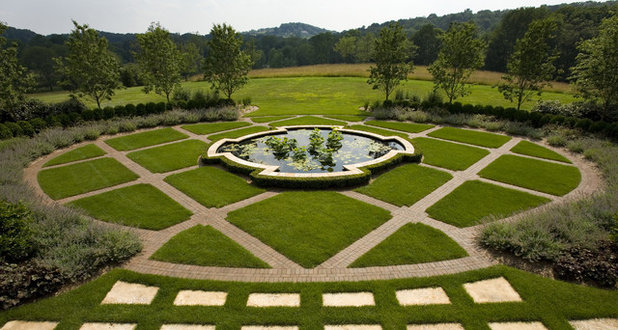
Liquidscapes
This formal grass terrace with a central pool leads the eye through to a natural landscape reminiscent of the English landscapes of the 18th century.
The garden blends seamlessly with the more natural land beyond — a trick the English landscapers employed using a sunken ditch known as a "ha-ha," beautifully executed here.
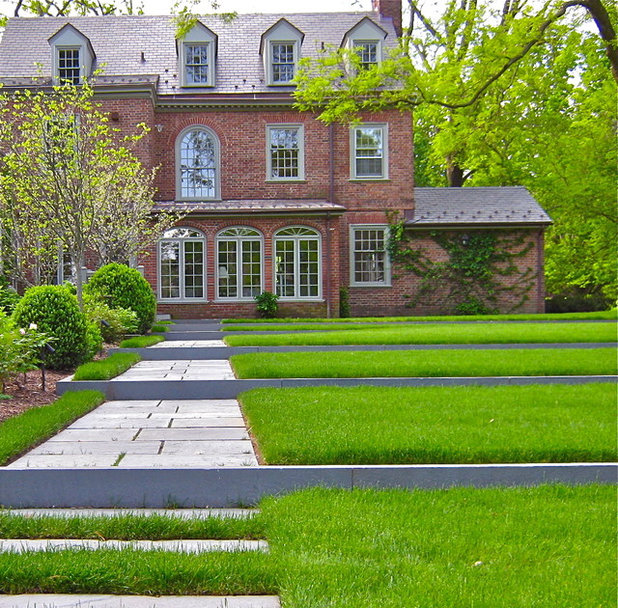
Liquidscapes
The simplicity of this landscape performs the main task of setting the house in the landscape. It doesn't compete with the architecture or stand out in its own right, but the two together make a complete picture.
The design creates a vista back toward the house at the end of the stepped path as well as creates pastoral views out from the main house.
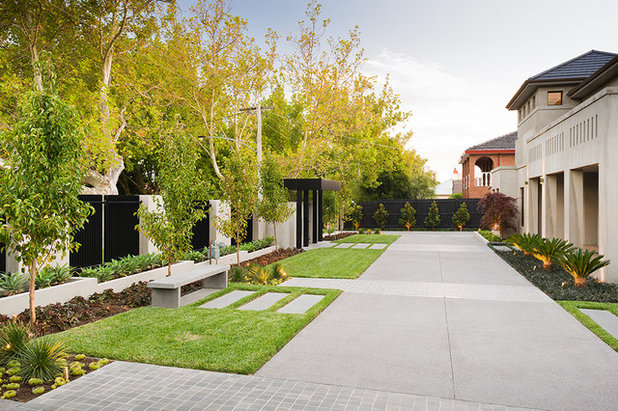
C.O.S Design
This contemporary landscape design links perfectly to the house it adjoins. The paving, planting and grassy area give the impression of a Mondrian
-style painting in complete balance.
Is it a viewing garden, you may ask, or has it a purpose other than its visual benefit? It is without doubt a garden designed to sit in. A bench is provided for that purpose, but I feel the overall design is meant to be viewed from the house.
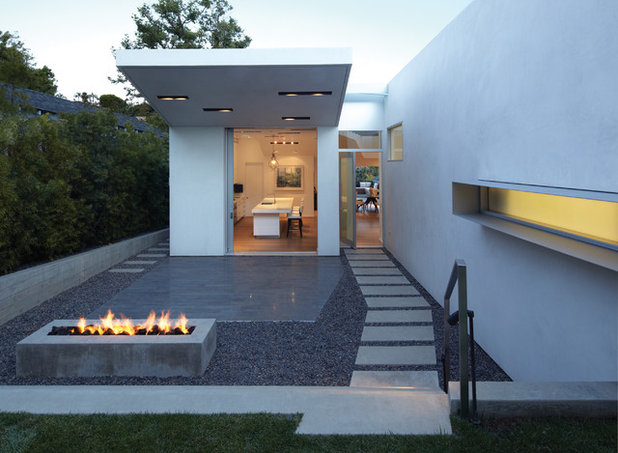
Griffin Enright Architects
A
minimalist garden space can become a picture in its own right. Plants don't always need to be the main contributors of the garden picture. The combination of textures and restricted color range used in this patio give an almost Zen garden contemplative view — which is completed by the dancing flames of the fire pit.
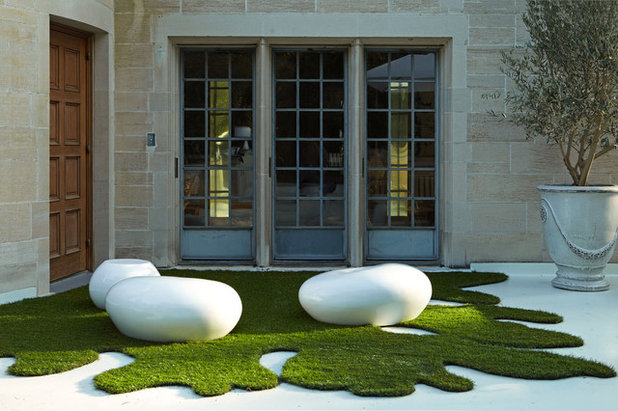
Margie Grace - Grace Design Associates
From garden to art installation. Sculpture gardens have become very popular in public spaces and private grounds. They provide the perfect exterior viewing theater.
This combination of stone-shaped seating over meandering artificial grass is a real art installation and could be found at any modern art gallery. Surely this must be one of the most maintenance-free gardens you could design, but it still has such great visual appeal.
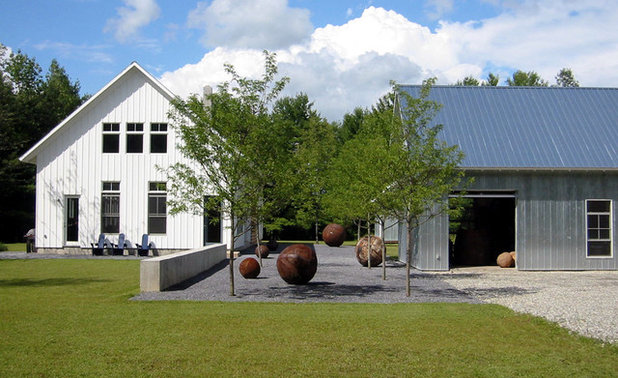
Wagner Hodgson
Set amongst the formality of the allée of standard deciduous trees, rusty ball sculptures bring this viewing garden to life. The minimalist buildings behind, including the sculptor's studio, create the perfect background and setting for this nearly plant-free garden.
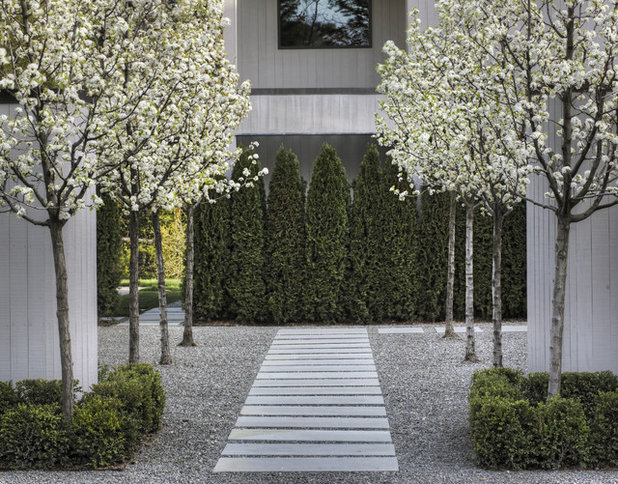
Terra Ferma Landscapes
Standard trees, this time pear trees, are again used in a modern parterre-style entry courtyard.
The indirect route along the pathway to the front entrance gives a wonderful vista through to the wall of golden conifers.
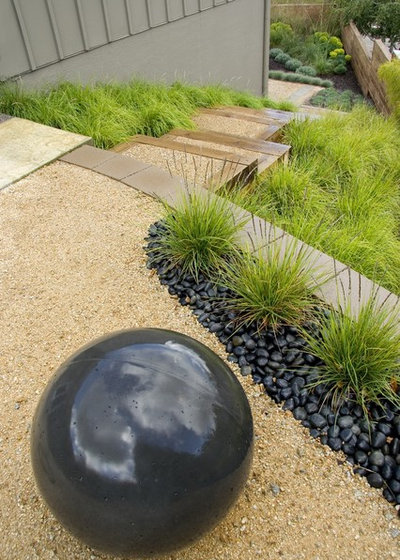
Jeffrey Gordon Smith Landscape Architecture
Even the most utilitarian of spaces can transform from a simple transit space into a vista in its own right.
This carefully thought-out design elevates ordinary steps into a visual joy of texture and color contrast set off by a simple sphere.
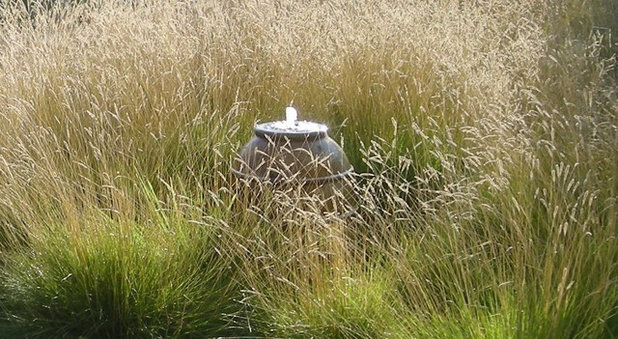
Lucas & Lucas
Creating a pleasurable vista does not always mean intricate planting or wide, manicured lawns. Sometimes it can be much simpler.
This urn water feature set amongst wayward grasses changes a simple planted area into a view reminiscent of the British artist Andy Goldsworthy, who uses nature to create amazing artwork.
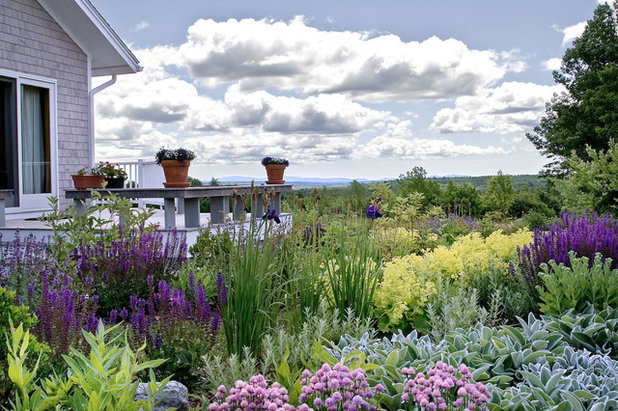
Matthew Cunningham Landscape Design LLC
I suppose you could say all gardens are, in the end, to look at and enjoy. But I do feel that some surpass that and are designed for the sheer visual pleasure they provide.
From the roots of the herbaceous borders of the beginning of the last century, the mixed borders we now enjoy planted with shrubs and perennials create a feast for the eye, without perhaps providing any further practical use other than ground cover.
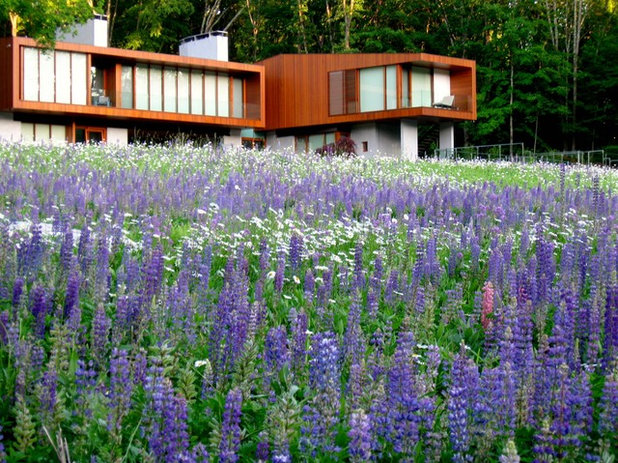
Designing Eden llc
The French impressionist painters didn't paint the landscape, but painted an impression of the landscape as they saw it — just think of Monet's paintings of poppy fields.
We can see how in this wonderful swath of pastel flowers, including lupins, the same effect has been created — a living impressionist painting — to just delight the eye.
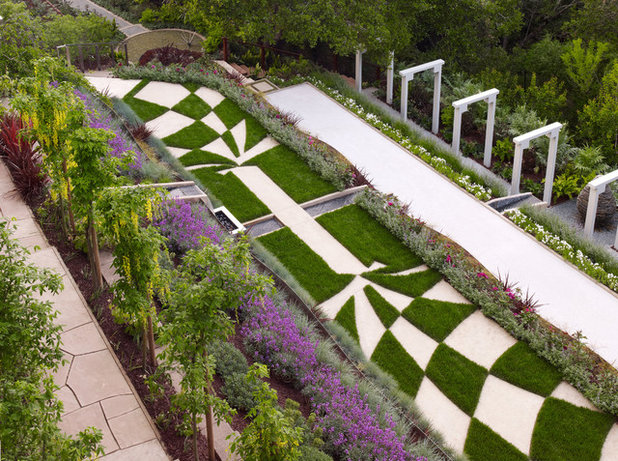
Zeterre Landscape Architecture
This most modern of gardens must be the epitome of viewing gardens. Both the design and the planting scheme create a combined picture that can be seen on many levels.
The patterns cut in the lawn serve no purpose other than the visual impact they make and the interest and pleasure they give the viewer.





